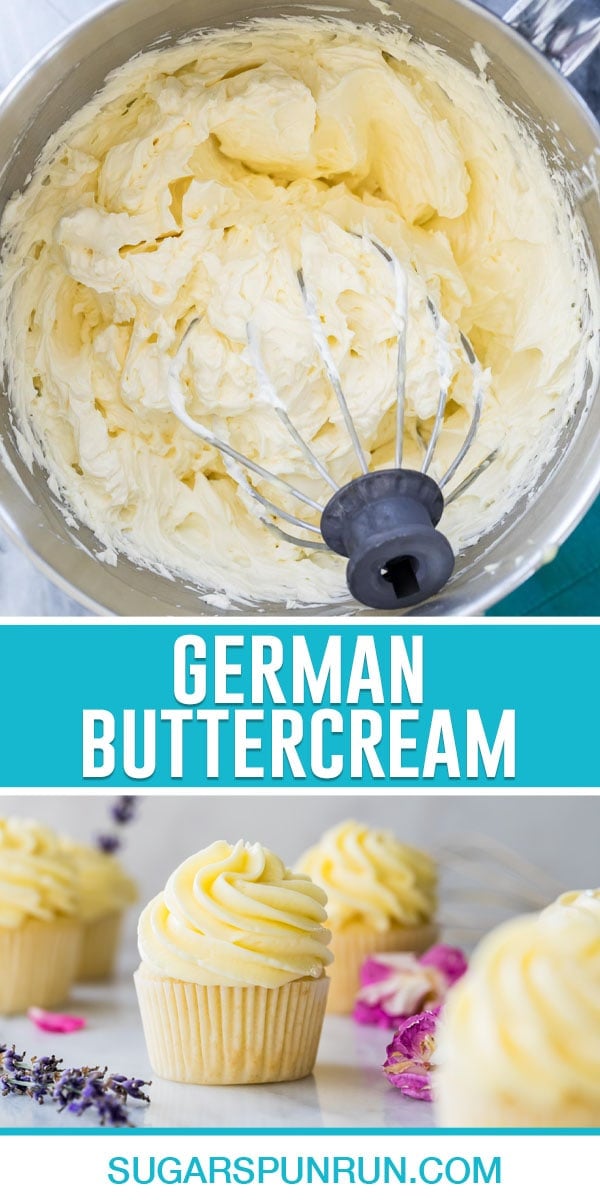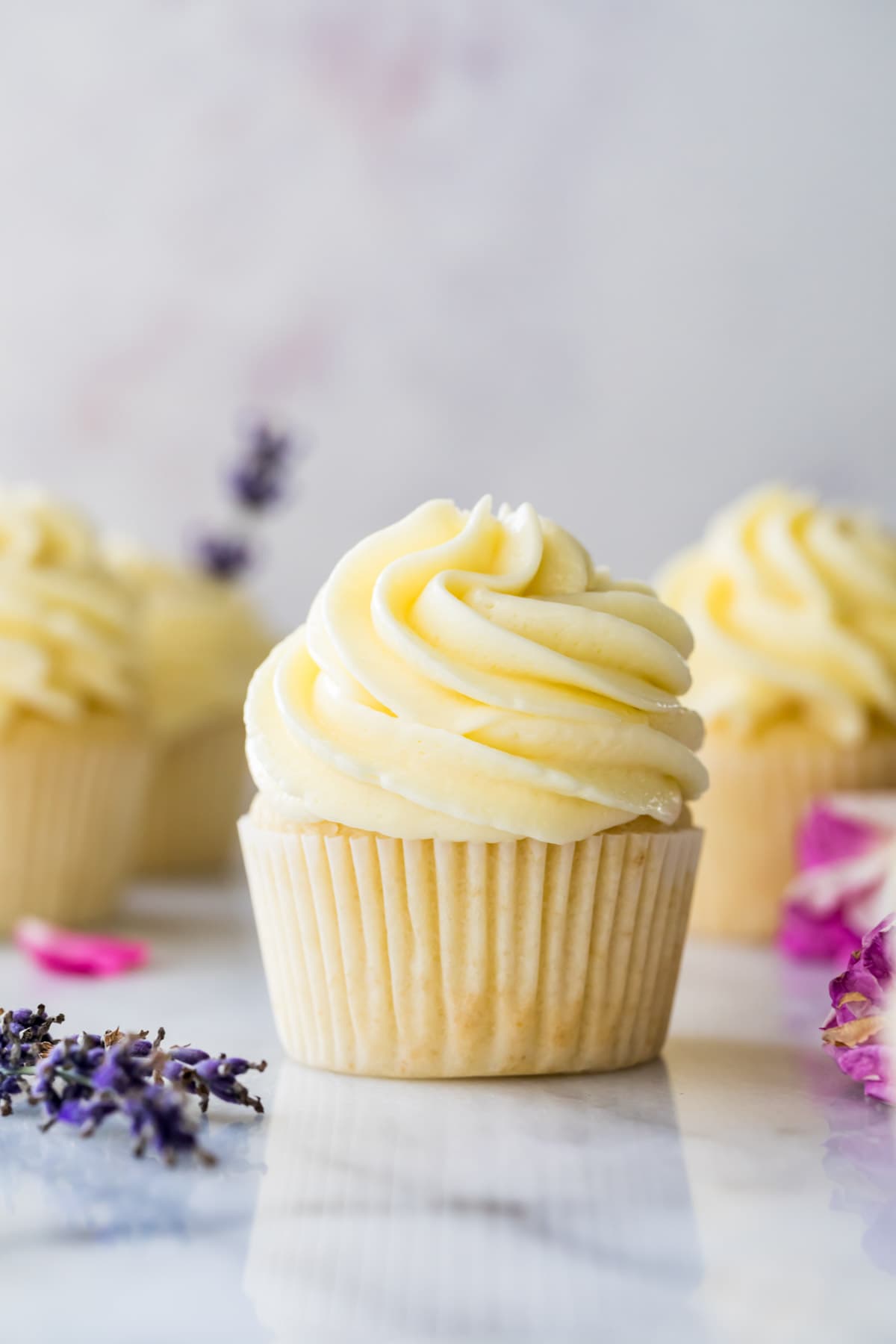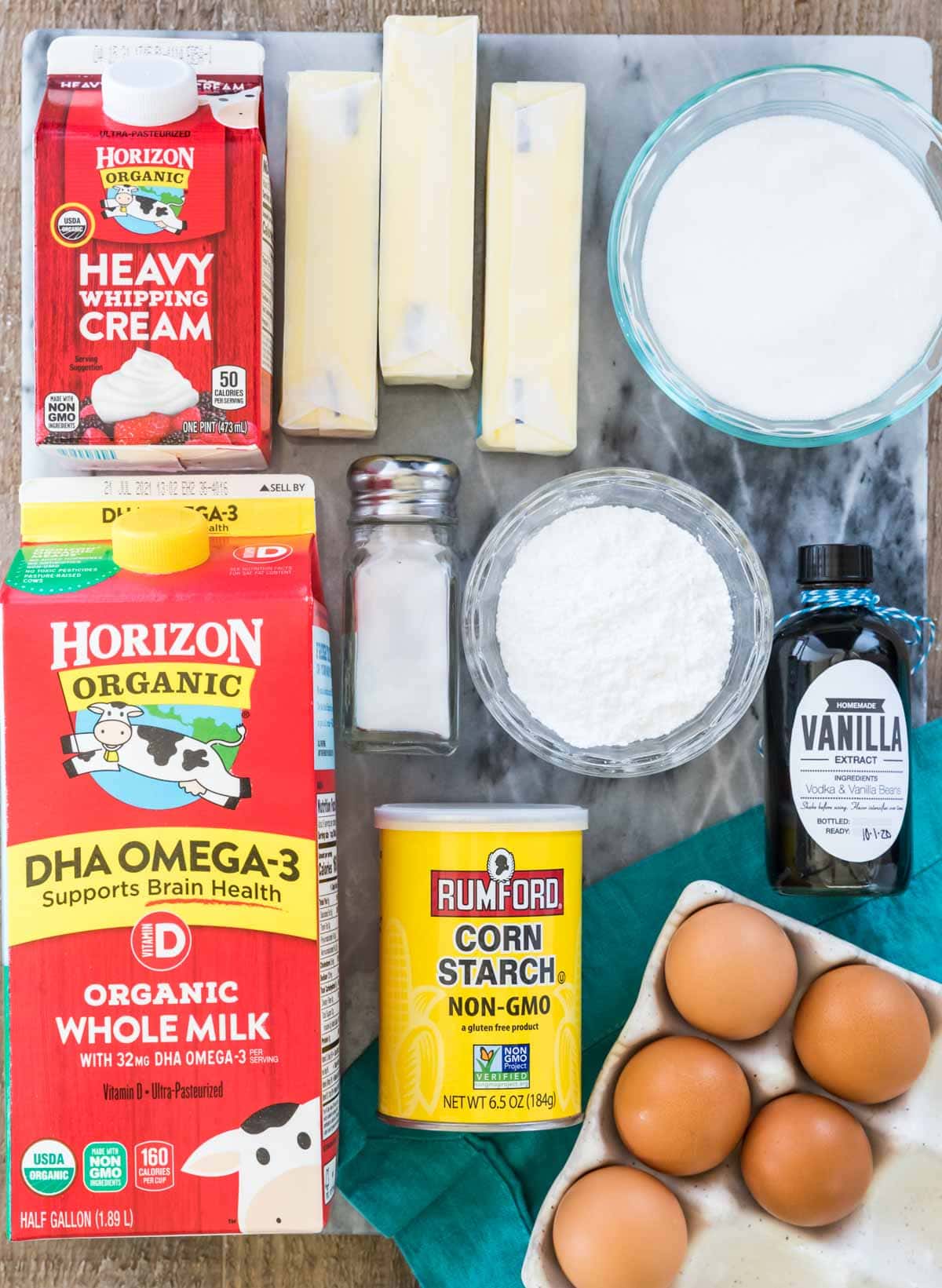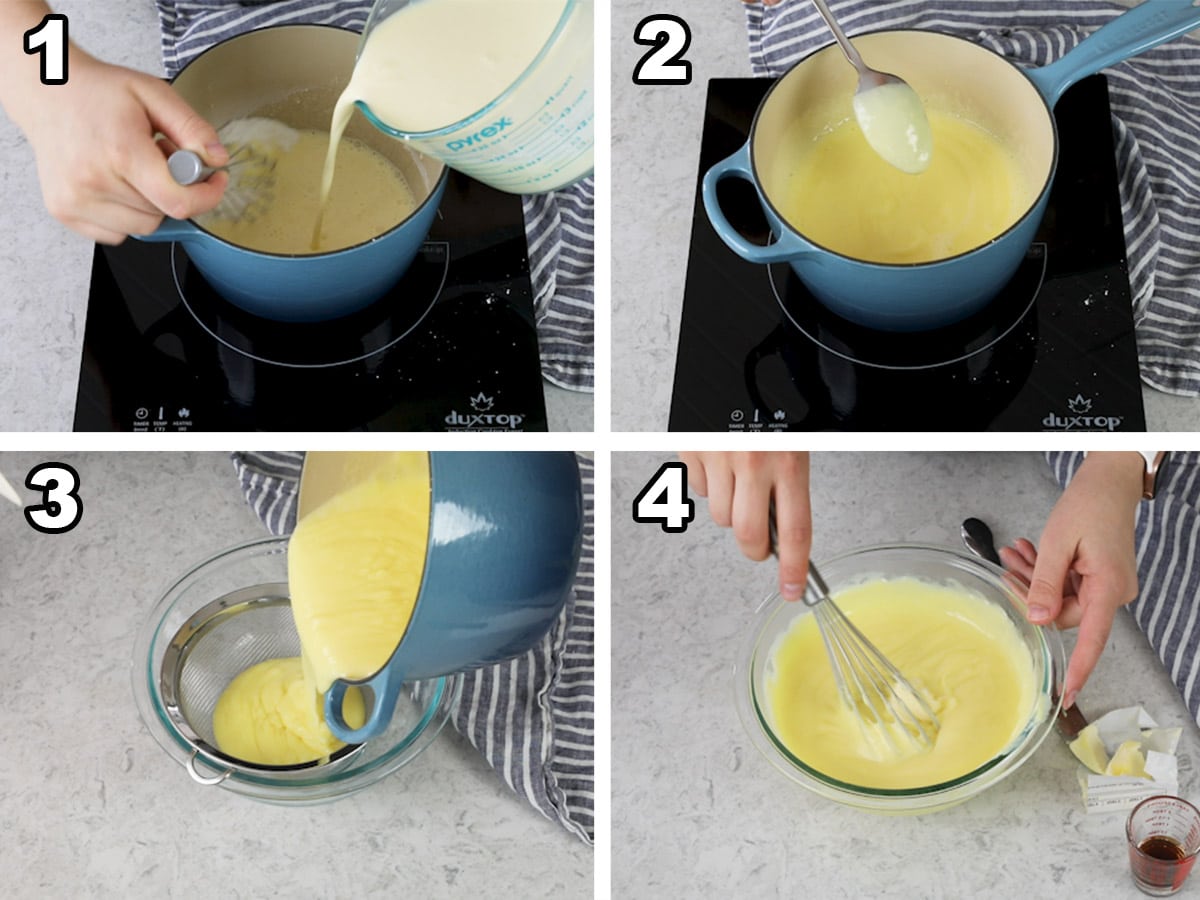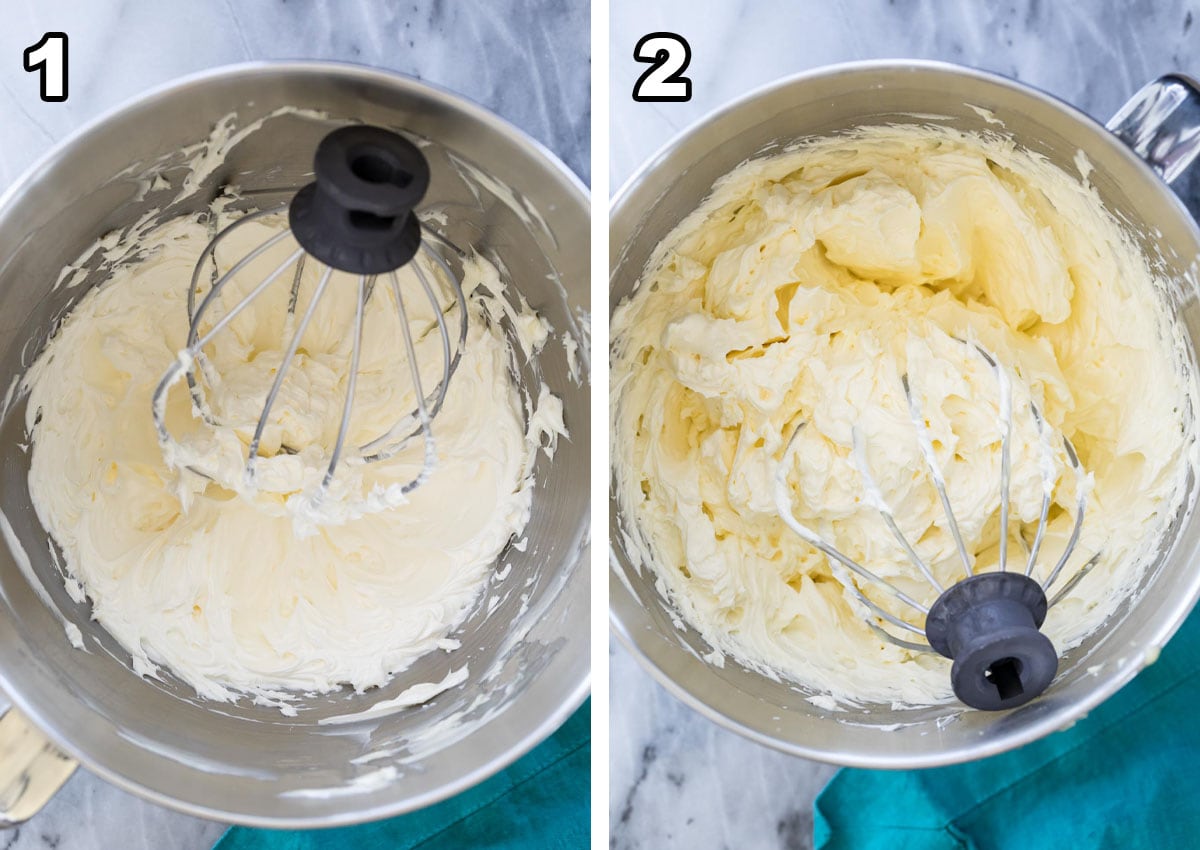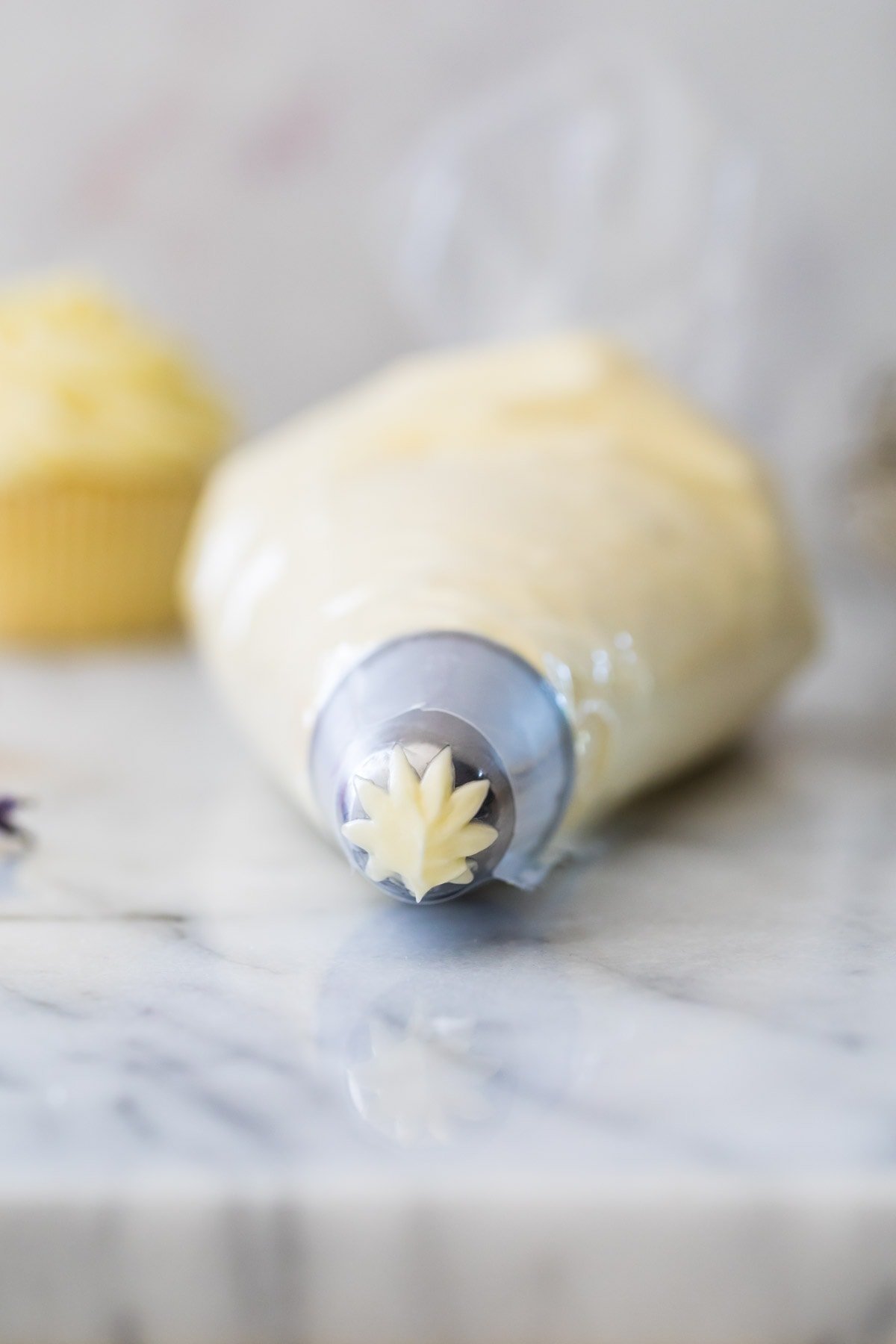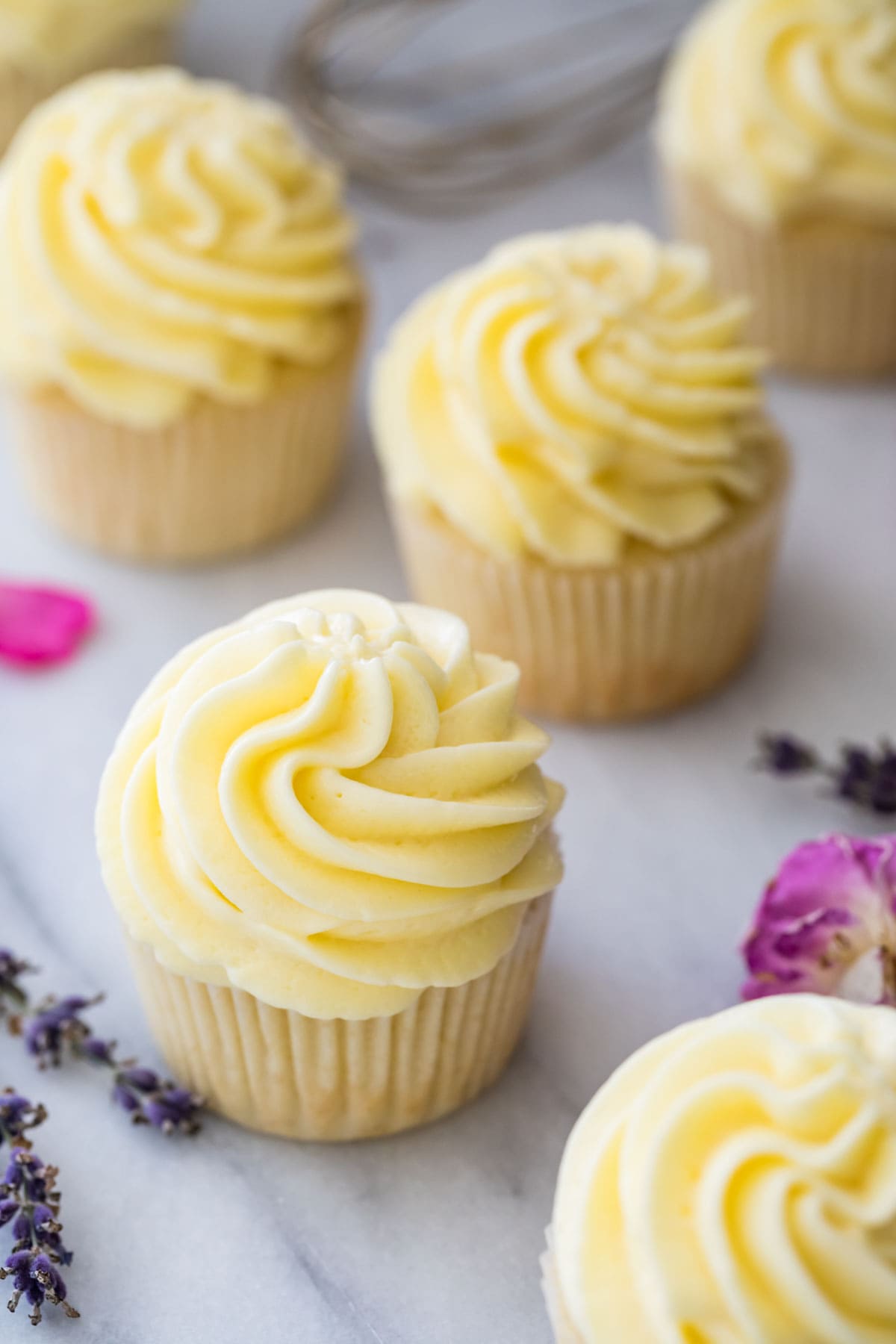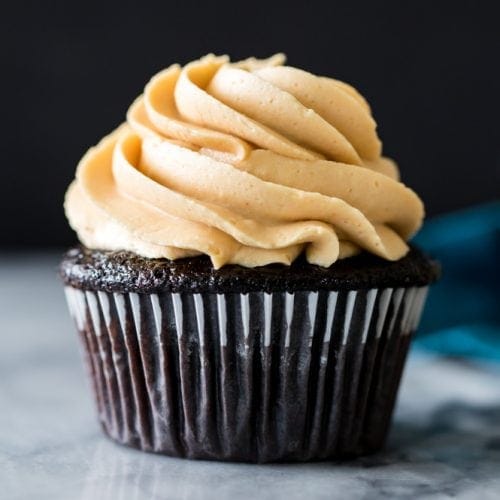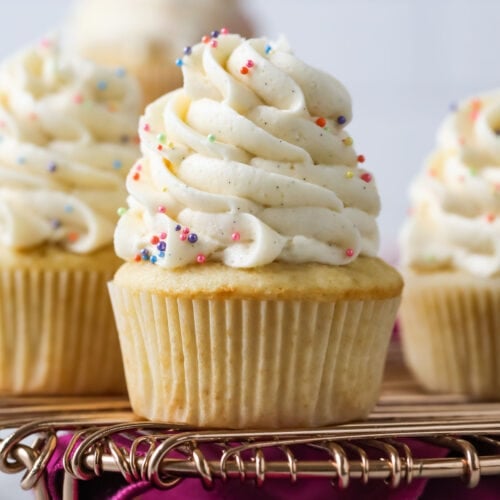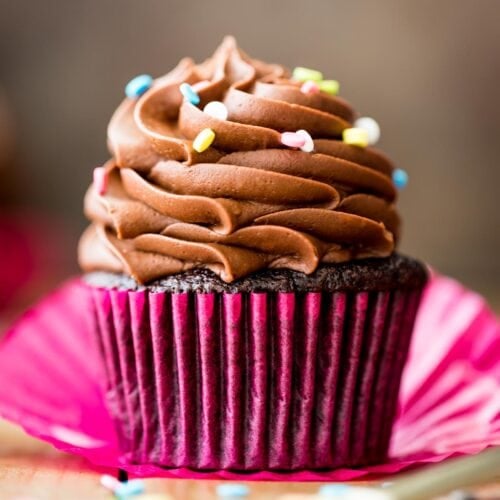Last week I shared my latest take on the easiest pastry cream you’ll make in your life. This week, I’m taking things one step further by turning that pastry cream into a smooth, subtly sweet German Buttercream! Similar to my Swiss Meringue Buttercream, German buttercream starts with a cooked egg base (only we’re using egg yolks in this instance) that, once cooled, is gradually added to whipped butter. The result is an unbeatable flavor and texture that may sound indulgent, but actually tastes very light and only mildly sweet. German buttercream is incredibly versatile, making it the perfect pairing for everything from cupcakes to donuts. Because it’s made from more than just butter and powdered sugar (like the American buttercream frosting you may be more familiar with), German Buttercream can be more complicated and finicky than most frostings, but it’s by no means impossible to make. There’s some technique involved, but I’ll be walking you through all the steps. One thing to note before you start cooking: German Buttercream does NOT hold up to heat. It’s essentially butter and pudding, so it will quite literally melt in warm temperatures (as many frostings do!). Keep this in mind and make sure you can keep the frosting chilled until you’re ready to serve. Let’s get started!
What You Need
If this ingredient list looks familiar to you, there’s a reason! These are the same ingredients used for my pastry cream, with the addition of more butter and powdered sugar (optional) that will help whip this up into a fabulous buttercream.
Heavy cream. You’ll use this as well as whole milk as the base for the pastry cream.Egg yolks. You’ll use five egg yolks for this recipe, which means you’ll be left with five egg whites. Use these in another recipe, like my strawberry cake, zebra cake, or lemon cake.Cornstarch. Starch thickens the cream, making it the perfect custardy base for our German buttercream.Sugar. You’ll use granulated sugar in the cream, and you can add powdered sugar to the finished buttercream if you want it to be sweeter. If it’s sweet enough for you, just leave that bit out! Butter. Soften your butter so it’s easy to cut through, but not melty/greasy/oily. Use unsalted, since we’re adding salt in ourselves. This helps us best control the flavor of the final frosting!Vanilla. For a lovely, light, and classic flavor, add vanilla to your cream. You can use vanilla extract or vanilla beans; see the pastry cream post for details. Salt. To balance the richness of this icing, you’ll add just a little salt.
SAM’S TIP: This icing is naturally tinted yellow. If you’d like it to be more white, you can do a few things: use vanilla beans or clear vanilla extract, whip your butter really well (it gets lighter the more you whip it), and use a VERY small amount (like the tip of a toothpick) of violet food coloring to counteract the yellow hue. Remember, this is just an overview of the ingredients I used and why. For the full recipe please scroll down to the bottom of the post!
How to Make Pastry Cream for German Buttercream
You can find more detailed information and the full process for how to make pastry cream in my last post. For this recipe, you will need to let the pastry cream cool and firm up completely, but you will want it to be the same temperature as your butter (near room temperature) before whipping everything together. This ensures a smooth frosting that doesn’t curdle.
How to Make German Buttercream
SAM’S TIP: It is VERY important that your pastry cream and butter are the same temperature (near room temperature, and not too soft or melty!) before you try to whip them together. If not, your buttercream won’t be silky smooth, and it may even curdle.
Troubleshooting
Because it’s a little more complicated than your average frosting, German buttercream can be a little finicky. One of the most common problems bakers have with this recipe is curdling or splitting. There are several reasons for this happening:
Too much cream being added at once. Work with only one spoonful of pastry cream at a time, and mix until fully incorporated before adding the next addition. Temperature difference between cream/butter before combining. Make sure your butter has softened to room temperature, and if you’ve refrigerated your cream, make sure it is has fully come back to room temperature. The frosting has become too warm. This can happen if your environment is too warm, or if you’ve whipped your frosting for a very long time.
No matter the cause, curdled buttercream can usually usually be remedied by continuing to mix, or placing the bowl in the refrigerator for 10-15 minutes and then continuing to mix. Almost always, curdled frosting can be saved with a little patience and know-how. Enjoy!
More Recipes You Might Like
Ermine FrostingBrown Butter FrostingStabilized Whipped Cream FrostingWhite Chocolate Buttercream
Let’s bake together! I’ll be walking you through all the steps in my written recipe and video below! If you try this recipe, be sure to tag me on Instagram, and you can also find me on YouTube and Facebook
German Buttercream is great on all of these recipes!
